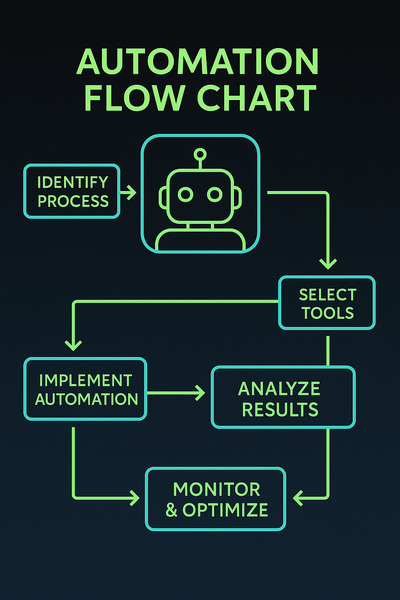How to Build an Automation Strategy for Your Business

Jumping into automation without a plan is like building a house without a blueprint. You might create something, but it won’t be sturdy or scalable. A clear automation strategy ensures your efforts align with business goals and deliver sustainable value. Without one, you risk implementing tools that solve the wrong problems or create new bottlenecks.
A sound strategy starts with defining your objectives. Are you aiming to reduce costs, improve customer satisfaction or free up your team for innovation? Once goals are clear, conduct a process audit to identify tasks that are repetitive, time‑consuming or prone to error. Map out the workflow for each process and note where data is collected, decisions are made and hand‑offs occur. This level of detail helps you choose the right automation technology and measure impact later.
Next, prioritise which processes to automate based on effort and impact. Start with low‑hanging fruit that offers quick wins and build momentum before tackling more complex projects. Establish metrics for success (such as response time, cycle time or cost per transaction) so you can quantify benefits. Finally, plan for continuous improvement: review your automations regularly, collect feedback from users and refine workflows as your business evolves.
Building the right strategy can feel daunting, but you don't have to do it alone. Our consultants specialise in mapping processes and designing roadmaps that maximise ROI. Book a free strategy call to start building your automation blueprint today.
Automation Steps & Logic
Below is a high-level overview of the steps involved in automating this process:
- Identify the Process: Map out the exact workflow that needs automation, including inputs, outputs and decision points.
- Select the Right Tools & Platforms: Choose AI agents, RPA bots or integration tools based on complexity and scalability needs.
- Design & Prototype: Build a proof of concept or prototype to validate the logic and gather stakeholder feedback.
- Implement & Integrate: Deploy the solution and integrate with existing systems, ensuring data flows seamlessly between components.
- Monitor & Optimise: Continuously track performance, gather insights and iterate on the automation to improve efficiency.
Recommended Bots & Agents
Here are examples of intelligent agents that can assist with this use case:
- Conversational AI Bots: Handle customer queries, onboarding or support through chat or voice interfaces.
- RPA Bots: Automate rule-based, repetitive tasks such as data entry, invoicing and report generation.
- Data Extraction Bots: Collect and cleanse information from documents, emails or web pages for downstream processing.
- Scheduling & Coordination Agents: Automate meeting bookings, reminders and coordination across teams.
- Integration Agents: Seamlessly connect your CRM, ERP, marketing and communication tools through APIs.
